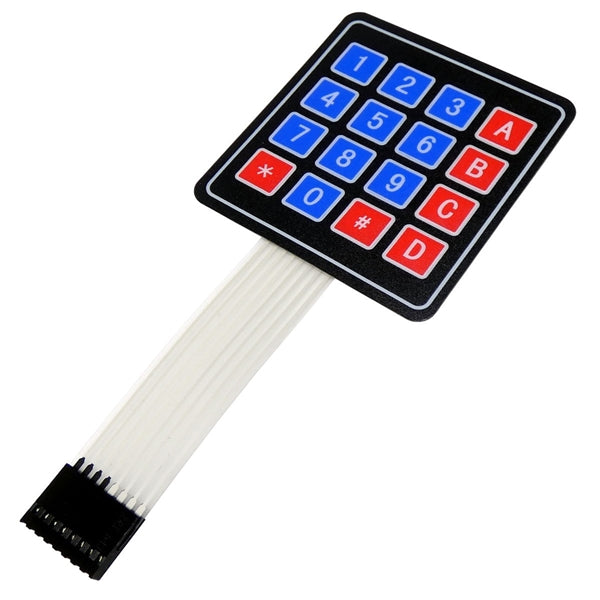Explore the Benefits of Using a Membrane Switch in Modern Devices
Explore the Benefits of Using a Membrane Switch in Modern Devices
Blog Article
Understanding Membrane Switches Over: The Key to Trustworthy and long lasting Controls

What Are Membrane Layer Buttons?
Membrane layer switches are an advanced solution in the world of individual interface innovation, incorporating performance and style flawlessly. These devices function as an interface in between individuals and electronic systems, incorporating several elements right into a small style. Usually created from versatile, slim layers of materials, membrane layer buttons are made to reply to touch, making it possible for customers to engage with equipment and digital gadgets properly.
The main components of a membrane button include a published circuit layer, visuals overlay, and a spacer layer that stops unintentional activation. The graphic overlay can be customized to reflect brand name identification or individual choices, improving appearances while ensuring usability. Membrane layer buttons are generally used in various applications, consisting of medical devices, customer electronics, and industrial tools, owing to their sturdiness and resistance to ecological variables such as wetness and dirt.
One of the vital advantages of membrane layer buttons is their capability to stand up to deterioration, making them ideal for high-traffic environments. In addition, they are light-weight and call for minimal room, enabling for cutting-edge layouts in item advancement. Generally, membrane switches represent a functional and efficient choice for contemporary electronic interfaces, weding modern technology with user-centric style concepts.
Just How Membrane Layer Switches Over Job
The procedure of membrane switches depend upon a simple yet effective system that equates customer input right into electronic signals. These switches include multiple layers, commonly including a graphic overlay, a spacer layer, and a circuit layer. When an individual presses the button, the top layer flaws, enabling a conductive element in the circuit layer to reach an equivalent conductive pad on the underside of the graphic overlay. This call shuts the circuit and sends out a digital signal to the device, indicating that the button has actually been activated.
The layout of membrane layer buttons can differ, yet they typically integrate domes or responsive aspects to offer responses to the user, boosting the overall experience - membrane switch. The materials made use of in membrane buttons, such as polyester or polycarbonate, add to their sturdiness and resistance to environmental factors, consisting of wetness and dust. In addition, the published circuits are normally enveloped, which safeguards them from wear and tear with time.
Advantages of Membrane Buttons

In addition, membrane layer buttons are known for their longevity. Built from robust materials, they are immune to dirt, moisture, and physical wear, which considerably extends their lifespan contrasted to typical mechanical switches. This toughness makes them especially suitable for high-traffic settings and applications requiring longevity.
One more considerable advantage is the ease of cleaning and upkeep. The smooth surface area of membrane layer switches decreases dirt buildup and is typically unsusceptible spills, making them perfect for setups that require frequent sanitization.
In addition, membrane switches offer a streamlined profile, bring about a thinner layout that can be incorporated right into various gadgets without adding mass. This attribute not only boosts the aesthetic allure but additionally adds to a more ergonomic product layout.
Applications of Membrane Buttons
Straightforward and flexible, membrane layer switches find applications across a large range of sectors, consisting of clinical gadgets, consumer electronics, and industrial devices. In the medical area, these buttons are important to gadgets such as diagnostic equipment, individual tracking systems, and infusion pumps, where reliability and simplicity of cleaning are crucial. Their capability to preserve and hold up against rough environments capability makes them perfect for such applications.

In customer electronic devices, membrane switches are used in products like microwaves, cleaning equipments, and push-button controls - membrane switch. Their smooth layout permits user-friendly interface, boosting the general user experience while supplying sturdiness and resistance to tear and use
Industrial equipment likewise gains from membrane layer buttons, particularly in control panels for machinery and automation pop over to these guys systems. These switches provide protection versus dust and moisture, ensuring consistent performance in challenging settings. Moreover, their adjustable features permit suppliers to tailor them to specific operational demands, improving performance and capability.
Choosing the Right Membrane Layer Switch Over
When choosing a membrane layer button, it is vital to think about different variables that affect efficiency and suitability for certain applications. The primary factors to consider include environmental problems, responsive comments, longevity, and design requirements.
First, examine the operating atmosphere; buttons revealed to moisture, chemicals, or severe temperature levels need specific products to make sure durability and capability. Next, review the demand for tactile comments. Depending on individual communication, some applications may take advantage of a tactile action to confirm activation, while others may like a non-tactile layout for aesthetic reasons.
Resilience is an additional vital factor; membrane buttons should be designed to endure regular usage, influences, and abrasion. Make certain the picked switch can withstand the expected lifecycle, particularly in high-usage situations.

Final Thought
In verdict, membrane layer switches great post to read over serve as essential components in the design of sturdy and dependable control systems throughout various industries. The flexibility of membrane changes allows for tailored remedies that meet particular functional needs, reinforcing their relevance in modern innovation.
Membrane changes stand for a vital facet of modern interface design, mixing performance with resilience in numerous applications.Membrane switches are an innovative option in the world of user interface innovation, incorporating capability and design flawlessly. Typically built from flexible, slim layers of products, membrane layer switches are created to respond to touch, making it possible for users like it to interact with equipment and digital devices effectively.
The layout of membrane buttons can vary, but they commonly incorporate domes or tactile aspects to give feedback to the customer, boosting the overall experience.In conclusion, membrane layer changes serve as essential parts in the design of trusted and durable control systems across various markets.
Report this page